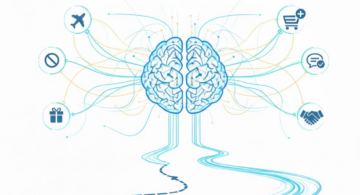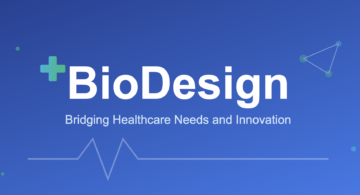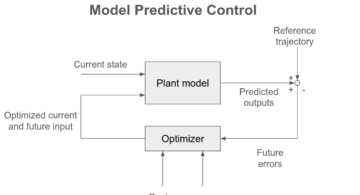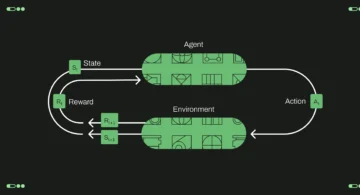Eyes, JAPAN
Web 3 and AI: The trend of the Future
Mark
Outline:
What is Web3?
What is AI?
what is the interconnection?
How are the models changing the world?
The early 1990s saw predictions of the internet’s transformational impact on everything we do, from the way we conduct business to the way we communicate to the way we amuse ourselves. The internet had a major boom as a result of the intense excitement that surrounded it.
The internet has not only revolutionized these, but has also become a significant contributor to the economy and a career path. Describing the internet then was like describing an abstract thought, and even though many people didn’t understand what it was, those who placed a bet on it and still do are changing the trajectory of their career and their generation.
Recently, the buzz has been on AI and the decentralized economy (Web3), and we are at that point in history when the world is about to be rewritten by technology.
The acronym Web3 is short for “web 3.0.” It was coined in 2010 by Charles Hoskinson, who was the chief technology officer at BitShares when it was a DAO platform based on Bitcoin protocol. A blockchain, internet-based digital sharing economy which utilizes smart contracts and Artificial Intelligence (AI) technology to facilitate the workflow between parties involved in a transaction, or it can be said Web3 is the open platform that connects, decentralizes, and audits the institutionalized web.
The Web3 project claims to usher in change by championing values like decentralization, data ownership, transparency, and trust and making innovations like artificial intelligence first-class citizens. A condensed explanation of Web3 is that it is the third generation of the Internet, based on the philosophy that the Internet should depart from a centralized model dotted with data silos, instead adopting a decentralized and interconnected structure that strives to deliver a faster and more personalized user experience. A decentralized network doesn’t have a single point of failure, meaning it is more resilient to cybersecurity attacks as no central entity controls the flow of information. Using blockchain as a secure and transparent foundation, Web3 will host a plethora of innovative technologies like artificial intelligence, machine learning, and the semantic web.
Artificial intelligence is the discipline of creating a computer program, commonly referred to as an “agent,” that acts like a human being. It can learn and reason intelligently, think creatively, and make decisions autonomously. Artificial intelligence is an umbrella term for all these features, including machine learning (ML) and deep learning (DL).
The most potent tool available to humans is artificial intelligence (AI), which can address the demands of numerous sectors, including healthcare, retail, and finance. There are countless ways that AI could be used. However, innovation is expensive, and each AI project has its own requirements and preconditions.
After more than ten years, we can now assert that “artificial intelligence is devouring software,” highlighting how AI is steadily becoming a crucial component of contemporary software systems. Software applications are dynamic thanks to AI. They develop dynamism and the capacity to analyze and respond to user behavior. More businesses are attempting to employ AI to generate fresh commercial impetus, so this is not a unique trend.
According to PwC, AI will boost the world economy by $15.7 trillion by 2030, increasing the global GDP by 14%. You would have difficulty locating a trendy tech topic that doesn’t in some way incorporate artificial intelligence, from cloud computing to CMS, recommendation systems, and autonomous vehicles. It’s realistic to anticipate that AI will play a fundamental role in guiding the development of Web3 technologies, given that Web3 will serve as the playing field for current and future trends.
In recent years, the relationship between Artificial Intelligence (AI) and Web3 has become a major focus of discussion, with opinions ranging from extremely positive to extreme skepticism. AI algorithms have been used to enhance the efficiency of Web3’s distributed ledger technology (DLT) and to automate complex tasks. AI also has the potential to increase the security of Web3 by helping to detect malicious activities and protect users from cyberattacks. Furthermore, AI can be used to improve the scalability of Web3, allowing for a larger number of users and increased transaction throughput. AI can also be used to reduce the energy consumption of Web3, which is important for its sustainability. While AI has already had a tremendous impact on Web3, the potential for AI to revolutionize the technology further is immense. AI can be used to make DLT more efficient, to improve the scalability and security of Web3, and to make it more energy efficient. With AI, Web3 will be able to provide users with a faster and more secure experience. Therefore, AI holds great promise for the future of Web3, and its potential should not be underestimated.
The impact of AI on the evolution of web3 technology is immense, as evidenced by the research of D Sheridan, J Harris, F Wear, J Cowell Jr, and other authors in their 2022 arXiv preprint. AI has enabled Web3 technology to move away from the traditional model of networking and communication, instead allowing for more efficient and self-organizing systems. Additionally, AI has enabled web3 technology to become more predictive and intelligent, allowing it to better anticipate user needs and provide more personalized experiences. In summary, AI has profoundly affected the evolution of web3 technology, allowing for more efficient, secure, and reliable networks and providing users with more personalized experiences.
Artificial Intelligence (AI) and Web3 technologies have the potential to revolutionize the way businesses operate. By leveraging AI, Web3 can drastically reduce costs, improve accuracy, and create new experiences for customers. Whether used for powering robots, automating communication, or providing analytics insights, the combination of AI and Web3 can revolutionize how businesses and organizations operate. This can provide a competitive advantage to those who understand these two technologies’ implications and how to leverage them to their fullest potential.
 2025/12/12
2025/12/12 2025/12/07
2025/12/07 2025/11/06
2025/11/06 2025/10/31
2025/10/31 2025/10/24
2025/10/24 2025/10/03
2025/10/03 2025/08/30
2025/08/30 2025/08/22
2025/08/22